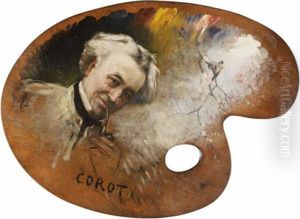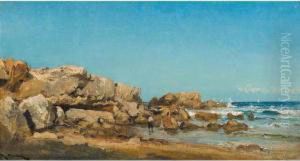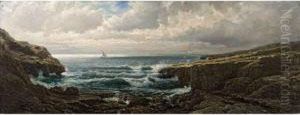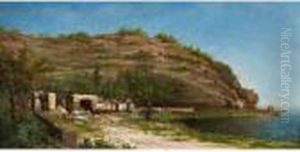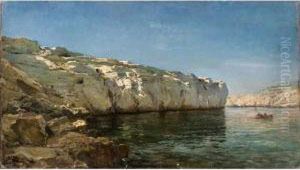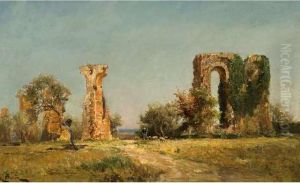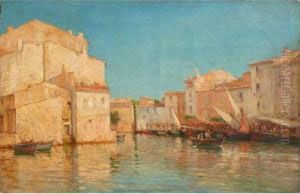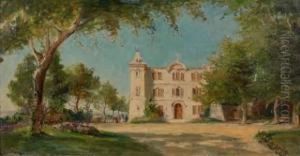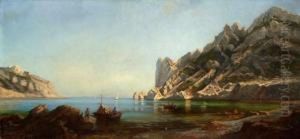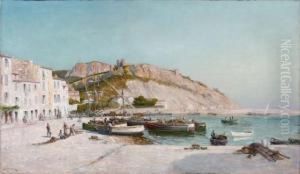Raphael L. Ponson Paintings
Raphael Ludovico Ponson was a notable artist from Trinidad. Born on October 16, 1835, in Port of Spain, Trinidad, he was a painter whose work predominantly centered on landscapes and genre scenes that captured the essence of Trinidadian life during the 19th century.
Ponson's early life and education remain relatively obscure, but it is known that he developed a profound interest in art from a young age. He was largely self-taught, and his work reflects a deep personal commitment to his craft rather than formal academic training. Ponson's style was characterized by its detailed representation of local landscapes, the vibrancy of the burgeoning towns, and the daily lives of the inhabitants, including both the colonial elite and the working-class citizens.
During his lifetime, Raphael Ponson remained in Trinidad and his art provides a valuable visual documentation of the island's history and culture during a time of significant transformation, as Trinidad was transitioning from a Spanish colony to a British one. His paintings are particularly appreciated for their historical value, offering insight into the social and physical landscape of Trinidad during the colonial era.
Despite his local popularity, Ponson's work was not widely recognized internationally during his lifetime. It was only posthumously that his contributions to Trinidadian art began to be acknowledged more broadly. Today, Ponson is celebrated as one of the most important artists in Trinidad's history, and his paintings are considered national treasures.
Ponson's artistic legacy is preserved in various collections, including the National Museum and Art Gallery in Trinidad and Tobago, where his work continues to inspire both locals and visitors alike. His dedication to portraying the beauty and complexity of his homeland has left an indelible mark on the art history of Trinidad and Tobago.
Raphael L. Ponson died on April 27, 1904. His life and work remain a source of pride for Trinidad and Tobago, and he is remembered as a pioneer who helped to lay the foundation for future generations of Caribbean artists.
